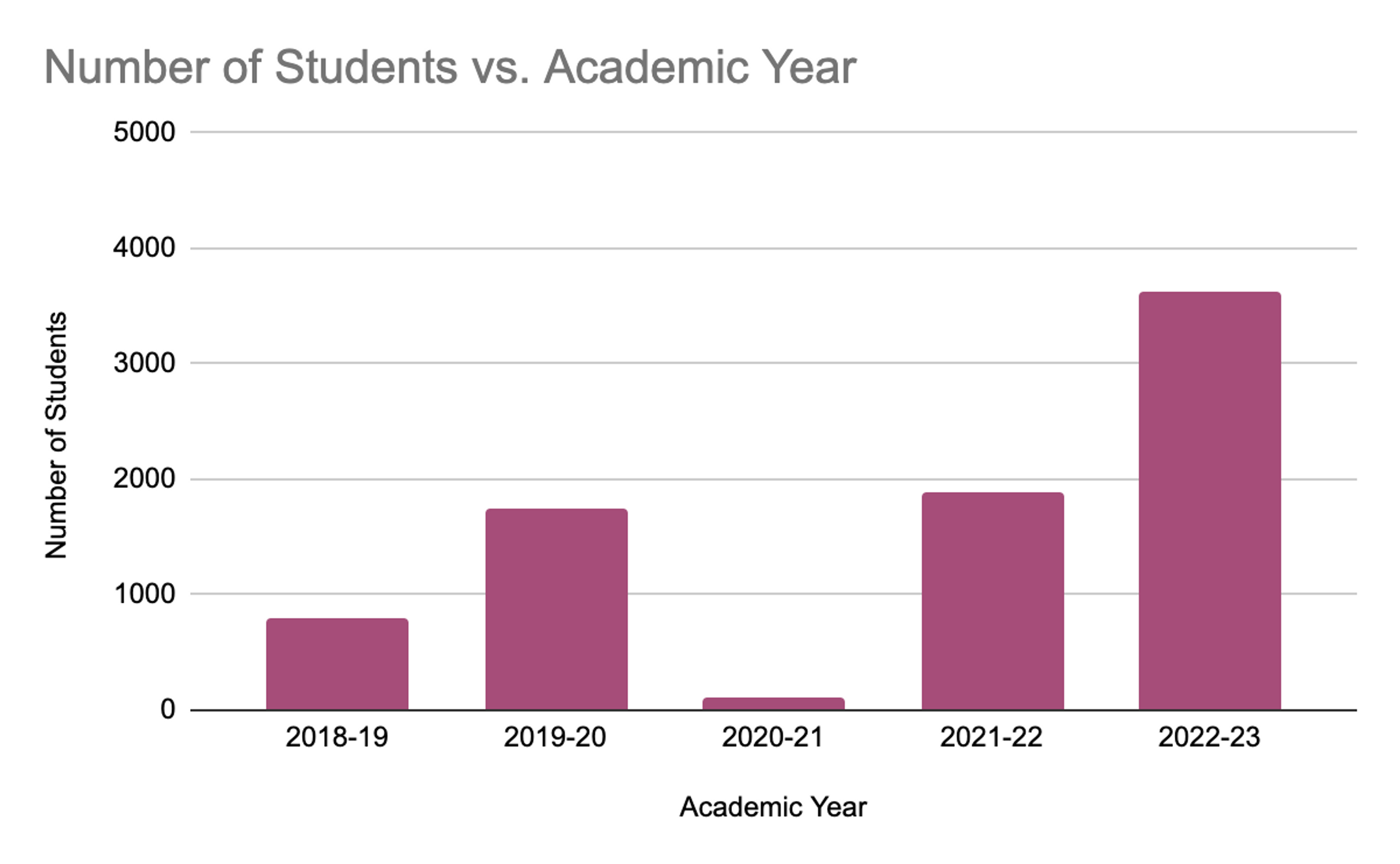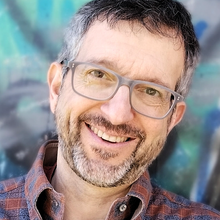
Election Candidate: Giving What We Can (Charity Elections)
View our Project Brief.
The mission
At its core, a charity election is an experience that exposes young people to underlying principles of effective altruism with the aim of expanding the global community of people who incorporate them into their decision making, especially around giving.
Through providing a large number of high school students with experience researching and discussing highly effective charities and their evidence of impact alongside a meaningful experience in critical thinking and civic engagement, the programme is designed to cultivate a culture of giving and giving effectively, expand moral circles, promote compassion, and raise the profile of outstanding causes among future givers. As captured in the array of benefits in our Project Brief [p. 3] we also aim to give students confidence as changemakers who can make a positive impact on the world and provide them with basic resources that might lead them to impact-focused fellowships, courses and career resources.
Inexpensive to run and scalable to dozens of schools, with careful growth management the Charity Elections programme could eventually reach hundreds of schools and tens of thousands of students, many of whom otherwise might not have opportunities to encounter developmentally appropriate ways of engaging with effective giving.
Please read on to learn more about our potential, and download our Project Brief from www.tinyurl.com/charityelectionsprojectbrief to see a more detailed view of our Theory of Change (p. 4); need, plans and opportunity for funding (pp. 5 and 7); and evidence of impact (p. 6). Links will only work if you download, rather than viewing it online.
How it works
The Charity Elections programme is based on Giving Games, but adapted for a secondary school audience and with additional components promoting civic engagement, youth empowerment and positive school climate. High schoolers use basic principles of charity evaluation to choose among three high-impact, Giving What We Can-listed organisations over a week of discussion, reflection, research and voting.
The lesson plan is laid out in a self-contained slideshow provided to the school. Typically run across a department or the whole school, the event has been hosted in classes including AP Government, Civics, Social Studies, IB Philosophy, Math, English, and Geography.
Once the students vote, a pot of up to $2,000 sponsored by Giving What We Can (GWWC) flows to the charities in a proportion chosen by the school. Each student ballot adds $2.00 to the amount going to the charities, so the more students who vote, the greater the donation will be. Ultimately, the students receive a statement of impact that estimates the social good accomplished by their donation. There is no cost to the school.
There is also an option for the school to choose student leaders who promote the election to their peers and are involved in other activities to enrich the experience for all. They practise key citizenship and life skills like public speaking and interviewing, and earn Service Leadership Certificates from GWWC.
The potential
There are few programmes directed at this age range even though reaching students at this stage can be particularly impactful.
- First, high school students are still developing cognitive structures and attitudes, and there is an opportunity to leverage their open-mindedness to explorations of self and world to foster compassion and a positive perspective towards giving effectively.
- Also, reaching students early can have cascading impact: Young people typically do not have in-depth experiences of giving, and an annual school event providing an experiential opportunity to give based on principles of cost-effectiveness and evidence might change, even slightly, the giving they do across their entire lives. This has the potential to lead to a powerful counterfactual increase in effective giving.
- Expanding moral circles at a young age means that students might give more generously and effectively of time and resources in the future, including in decisions about volunteering, career, and lending one’s time, voice or expertise to a movement.
Engaging the students in a gratifying electoral process may have other long-term benefits valued by schools. For example, a study at Tufts concluded that a positive experience with civic participation in school can lead to greater involvement as voters and active citizens later in life. Additionally, providing an opportunity for students to share, develop, and discuss their perspectives can build a healthy school climate. Civics and government teachers might incorporate our event into the curriculum as a positive encounter with civic engagement that has the opportunity to foster positive attitudes towards ongoing civic participation.
And, as mentioned, the Charity Elections programme is highly scalable and inexpensive to run. The latter is due mainly to the way the funding functions . . .

Innovative funding
The school sponsorship is a novel and efficient use of funds, giving donors the opportunity to divert giving temporarily (that would otherwise be on their way to effective charities) to students to power a meaningful educational experience, before the funds flow on to the charities, allocated based on the students’ vote. In essence, before reaching the charities, the donation pool is borrowed temporarily to inspire meaningful discussion and learning and to build the community of people who incorporate principles of effective giving into decision making. Note this fundraiser is for operational costs; the school sponsorships are, for the time being, sufficiently covered for 2023.
Success so far
The programme has been run in six countries so far (the UK, US, Italy, Spain, Australia and Israel) with interest to date from nine others, and the entire curriculum has also been translated into and run successfully in Italian. Ultimately, the majority of schools that run the programme come back and apply for sponsorship a second time or on an ongoing basis.
In numbers, the overall goal of the project is to increase the reach of the programme from 6 schools and 1,827 students in 2021–22 and 12 schools and 3,616 students in 2022–23, to perhaps 18–24 schools and 5,400–7,200k students in 2023–24.
Subsequent to running a charity election, students have been motivated to start EA-related clubs, incorporate principles of effective giving into school charity programs, publish articles on school websites, create Instagram pages, and conduct interviews to reflect on the impact of their campaigns. Results have been presented by teachers at national and international conferences.
Impact measurement
The EAMT team has been helping us develop metrics and evaluate results and—despite the need to do more and tighter measurement, the tricky issues around data collection due to child protection regulations, and the short duration of the programme—initial data suggest that shifts towards giving significantly and giving effectively were generally likely to be real differences (based on estimation and not formal statistical tests). Similar shifts were suggested in the values ‘being compassionate’, ‘thinking critically’, ‘caring about people distant from me’, and ‘making the world a better place’. Part of our funding would be used to collect more data, run additional statistical tests, and account for biases and school-specific variables.

A few words from participants
It taught us leadership skills, problem solving, and was a very fun class activity . . .
there was so much to take away.
- Student
It’s a great opportunity to discuss personal responsibility about world-wide issues. Researching a charity and casting a vote that includes actual funds . . . [gives] students a chance to truly practice what it means to be “global citizens”.
- Teacher
It makes me realise how interconnected we are and any positive impacts in one part of the world can echo globally.
- Student
It gave me a sense of purpose.
- Student
Need for funding
We are looking to fund the operations of the programme at one 0.5 FTE salary plus modest budgets for promotions and outreach activities. This funding will allow our two-person team to boost school outreach to draw in more schools, improve our measurement of impact (which has been developed to accommodate data protection laws for minors), and enrich the educational experience for students. At present, without funding for operations and administration, we cannot continue to reach our potential in scale and efficacy.
For more information please visit www.charityelections.org.

Adam Steinberg
Adam is Communications Lead for Giving What We Can Charity Elections and recently became Major Gift Fundraising Officer (Australia and Southeast Asia) for The Life You Can Save. He also does freelance editing and writing for other groups. Over the years working in media and communications, he edited and directed film and video, served as editor-in-chief of an annual sustainability guide, and product managed award-winning children’s educational software. Adam taught English Language and Literature and advised student green clubs at international schools in Germany and Wales for over a decade before turning back to communications work in 2021, this time with a focus on social impact (and EA) with a mission to explore, explain and inspire effective solutions to the problems of our time. His MFA is in Musical Theatre Writing from the Tisch School of the Arts at NYU.